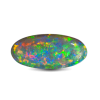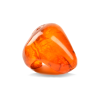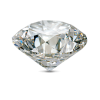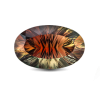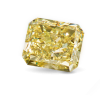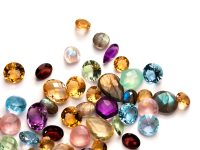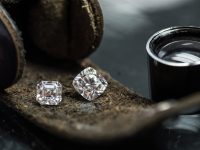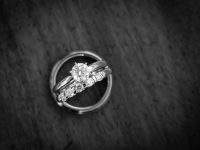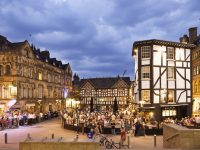Sunstone
Sunstone’s phenomenal varieties show a distinct and lively glitter called aventurescence.
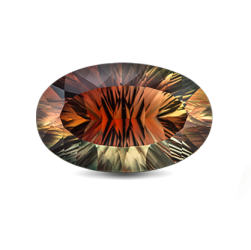
Sunstone Description
Gem connoisseurs and innovative jewelry designers often seek the subtle beauty of lesser-known—but still intriguing and unique—gemstones. Some of those are members of the feldspar group.
The feldspar group’s wide variety of unusual gems includes moonstone, non-phenomenal orthoclase, phenomenal and non-phenomenal labradorite, sunstone, and amazonite. Of these feldspars, moonstone is a constant favorite, while sunstone from Oregon is gaining attention as a natural and untreated product of the United States.
Although sunstone and moonstone are both members of the feldspar group, the resemblance stops there. While cool moonstone’s phenomenal varieties offer a soft and gentle adularescent glow, warm sunstone’s phenomenal varieties show a distinct and lively glitter called aventurescence. Aventurescence is a sparkly, metallic-looking luster caused by flat, reflective inclusions, sometimes called “schiller” by sunstone fanciers.
The feldspar group has many members. Some are suitable for jewelry use, some aren’t. Members of the feldspar group vary slightly in chemical composition, and those variations produce a variety of gemstones that differ widely in appearance.
There are two main branches of the feldspar family tree—feldspars that contain potassium and feldspars that contain a mixture of calcium and sodium.
Two species of feldspars contain potassium. These are orthoclase, which includes the gem varieties moonstone and orthoclase sunstone; and microcline, which includes the gem variety amazonite.
Gemstone Details
- Mineral: Feldspar
- Chemical composition:
- Orthoclase – KAlSi3O8
- Oligoclase and labradorite – solid solution between NaAlSi3O8 and CaAl2Si2O8
- Color: Yellow, green, red, red-brown, colorless
- Refractive Index:
- Orthoclase sunstone – 1.518 to 1.526
- Oligoclase sunstone – 1.537 to 1.547
- Labradorite sunstone – 1.559 to 1.568
- Birefringence:
- Orthoclase – 0.005 to 0.008
- Oligoclase and labradorite – 0.007 to 0.010
- Specific gravity:
- Orthoclase – 2.58
- Oligoclase – 2.65
- Labradorite – 2.70
- Mohs hardness: 6.0 – 7.2
Alexandrite Gemstone as rough
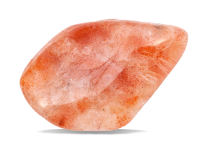
A non-phenomenal form of orthoclase feldspar appears in jewelry on rare occasions. Sometimes faceted, its hue is usually a transparent yellow.
Plagioclase feldspars contain a mixture of calcium and sodium, and they have slightly different compositions. The gem species in this feldspar family include labradorite and oligoclase.
Not all feldspars that bear the name “sunstone” are from the same side of the feldspar family—both the orthoclase and the plagioclase species boast a sunstone feldspar variety. The name sunstone refers to the gem’s appearance rather than to its chemical makeup.
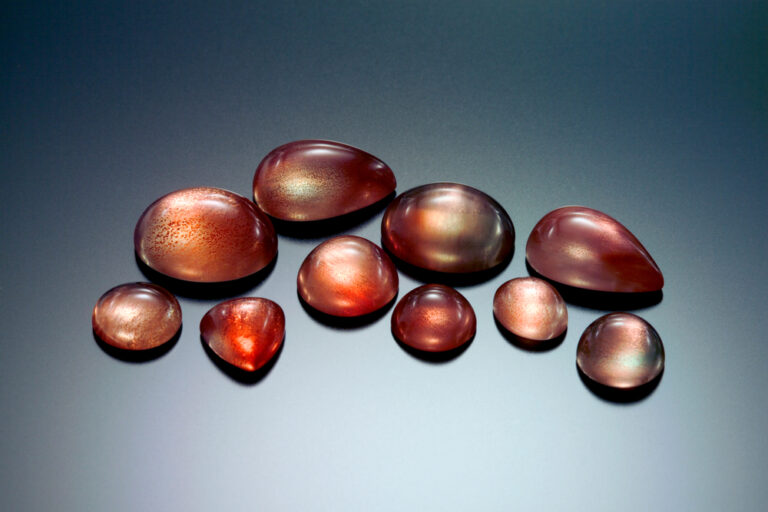
There are many sunstone varieties. If aventurescence is present, gemologists call it aventurine feldspar. The aventurine feldspar from India has a red-brown bodycolor and sunny glitter. It’s perhaps the best-known sunstone variety, but that situation has been changing.
The US state of Oregon produces a number of sunstone varieties. The increasing supply from the area has made sunstone more available to the general public. Because many of the sunstone types are unique to the rugged
high-desert area in South Central Oregon, they’re being marketed as “all-American” gemstones.
Although most sunstones have yellow, orange, or brown bodycolor, not all sunstones are aventurescent. The appearance of the phenomenon depends upon the size of the inclusions. Small inclusions create a reddish or golden sheen on top of any bodycolor. Larger inclusions create attractive, glittery reflections. Sunstone inclusions can be hematite, copper, or some other mineral.
In the early 2000s, a material marketed as Tibetan sunstone or Tibetan andesine generated an ongoing controversy. Experts from several gemological laboratories examined the stones, visited the areas said to be their sources, and investigated recently developed gem treatment processes. Their findings indicated that the material might have been pale andesine from Mongolia that had been treated by infusion with copper to give it lively coloring.
Sunstone History and Lore
In the early 1800s sunstone was a little-known, rare, and costly gemstone. It wasn’t until finds in Norway, Siberia, and other parts of the world that sunstone became somewhat more widely recognized, more available, and less expensive. In the US state of Oregon in the early 1900s, there were reports of sunstone finds in ancient lava fields in a desert area called Warner Valley. Even earlier, Native Americans in that area might have been the first collectors of Warner Valley sunstones.
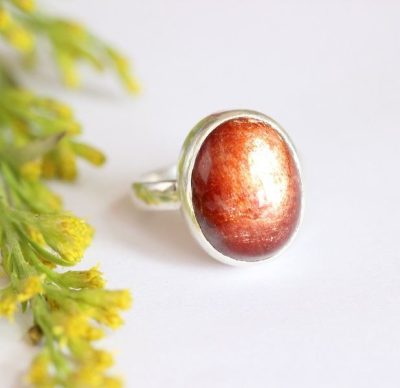
According to Native American legend, the blood of a great warrior – wounded by an arrow – dropped onto pieces of Oregon sunstone. The blood carried his warrior spirit into the stones, coloring them with shades of red and giving them sacred power. A museum in Jacksonville, Oregon, includes sunstones in its display of Indian artifacts. In Oregon today, several mining claims produce enough of this unique material to supply mass marketers as well as carvers and high-end jewelry designers.
Facts about Sunstone Gemstone
GLITTERY
Reflective inclusions in sunstone’s phenomenal varieties cause a distinct and lively glitter called aventurescence.
Oregon sunstone’s colors don’t result from treatment. The gem’s all natural and it’s mined in the United States.
“SPINEL RED”
Red-colored Oregon sunstone is often marketed to consumers as “spinel red.” Its vivid hue rivals spinel
Quality Factors
COLOUR
The most in-demand sunstone colors are deep red – like this gem – deep green, and intense bicolors.
CLARITY
Small inclusions provide a reddish or golden sheen; larger inclusions create glittering reflections.
CUT
Creative cuts and calibrated gems alike are designed to highlight the gem’s glowing colors.
CARAT WEIGHT
Sunstone is available in a range of sizes, but large carved gems like this Oregon beauty are rare.


